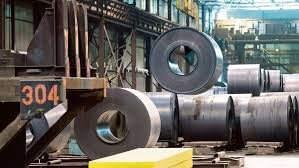Indian SMEs Struggle as Cheaper Chinese Stainless Steel Floods Market, Local Demand Slumps
Introduction:
New Delhi’s small and medium enterprises (SMEs) face a daunting challenge as they grapple with the influx of cheaper stainless steel imports from China. The surge in Chinese imports has resulted in a significant decline in local demand, forcing many Indian SMEs to operate at a mere 30% of their capacity. This article examines the impact of this trend on the Indian economy and explores potential solutions to support the struggling SME sector.
The Influx of Cheaper Chinese Stainless Steel:
In recent years, Chinese stainless steel imports have flooded the Indian market, triggering an alarming situation for local manufacturers. The low-cost Chinese products have captured a substantial market share, posing a serious threat to Indian SMEs. These SMEs, which were once the backbone of the Indian manufacturing sector, are now facing severe challenges due to weakened demand for their locally produced stainless steel.
Impact on Indian SMEs:
The repercussions of the influx of cheaper Chinese stainless steel on Indian SMEs have been devastating. Many of these enterprises are operating at a mere 30% of their capacity, struggling to survive in a market flooded with cheaper alternatives. With reduced demand for their products, SMEs are facing financial constraints, layoffs, and even closures. This downturn in the sector has far-reaching implications, as SMEs are major contributors to employment generation and economic growth.
Reasons for Weak Demand:
Several factors contribute to the weak demand for locally produced stainless steel. The primary driver is the vast price difference between Chinese imports and domestic products. Chinese stainless steel is often sold at significantly lower prices due to various factors, including economies of scale, low production costs, and government subsidies. Indian SMEs, burdened by higher production costs and limited economies of scale, find it difficult to compete with such low-priced imports.
Additionally, the quality of Chinese stainless steel has significantly improved over the years, eroding the perception that imported goods are inferior to domestic products. This has further weakened the demand for local stainless steel in the Indian market. Furthermore, trade agreements and tariff structures have not effectively protected Indian SMEs from the surge in imports, exacerbating the problem.
Impact on the Indian Economy:
The struggles faced by Indian SMEs have broader implications for the Indian economy. SMEs play a crucial role in employment generation, especially in rural areas. With reduced production and financial difficulties, these enterprises are unable to create sufficient job opportunities, leading to unemployment and income disparities. Moreover, the decline in local production has negative ramifications for the manufacturing sector, hindering India’s efforts to achieve self-reliance and economic growth.
Addressing the Challenges:
To alleviate the challenges faced by Indian SMEs, several measures can be undertaken. First and foremost, the government needs to prioritize the sector by introducing policies that protect domestic industries from unfair competition. Implementing or revising trade agreements and tariffs can ensure a level playing field for SMEs and incentivize local production.
Secondly, improving the quality and efficiency of Indian SMEs’ operations is essential. By investing in technology and innovation, SMEs can enhance their competitiveness and produce high-quality stainless steel products that can rival imports. Government support in the form of financial assistance, training programs, and technological collaborations can greatly aid in this process.
Furthermore, establishing clusters or industrial parks exclusively for SMEs could help them consolidate resources, reduce costs, and improve economies of scale. These clusters can foster collaboration and knowledge-sharing among SMEs, enabling them to collectively tackle the challenges posed by imported stainless steel.
Conclusion:
The influx of cheaper Chinese stainless steel imports has dealt a severe blow to Indian SMEs, resulting in weakened demand for local products and a decline in their capacity utilization.




